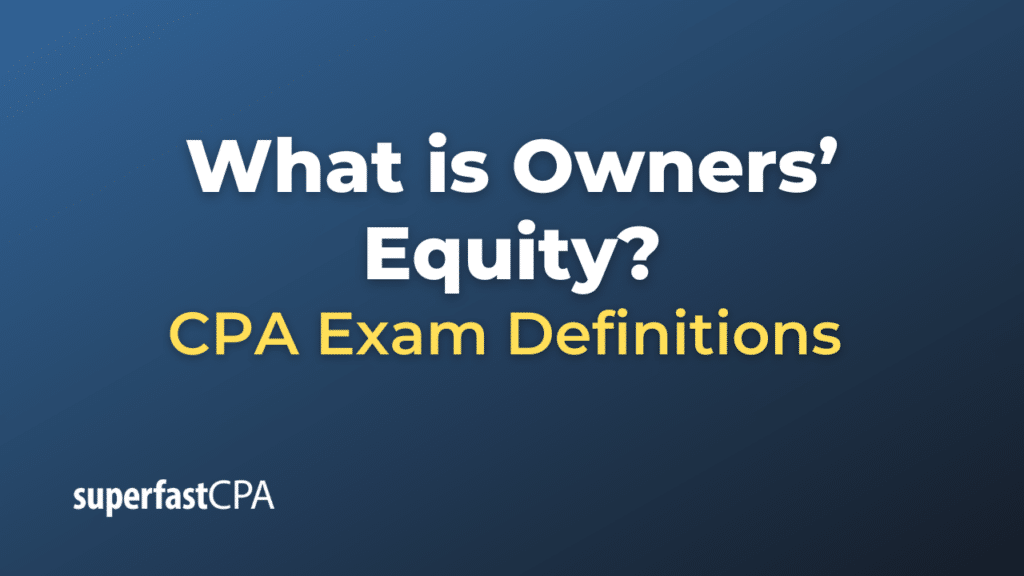Owners’ Equity
Owners’ equity, also known as shareholder’s equity in a corporation, or simply equity, represents the residual interest in the assets of an entity after deducting liabilities. In simpler terms, it’s what’s left for the owners of a company after all debts and obligations have been paid.
Owners’ equity is a key part of the basic accounting equation:
Assets = Liabilities + Owners’ Equity
This equation shows that what a company owns (its assets) is financed by what it owes (liabilities) and what the owners have invested (owners’ equity).
Owners’ equity consists of two main components:
- Capital Contributed by Owners: This is the money or other assets that owners have put into the business. In a corporation, this is often represented as share capital.
- Retained Earnings: These are the profits that the company has earned over time and chosen to reinvest in the business, rather than distribute to the owners.
In a corporation, owners’ equity is represented on the company’s balance sheet and includes common stock, preferred stock, paid-in capital, and retained earnings. In a sole proprietorship or partnership, it’s usually referred to as the owner’s capital account and may also include a drawing account that tracks withdrawals by the owners.
Owners’ equity is a crucial measure of a company’s financial health and stability. A positive equity balance indicates that the company’s assets are greater than its liabilities, while a negative equity balance can be a sign of financial distress.
Example of Owners’ Equity
Imagine a small business named “Quick Repairs”, which is a corporation. Quick Repairs currently has the following financial information:
- Assets: $500,000 (This includes cash, accounts receivable, inventory, equipment, buildings, etc.)
- Liabilities: $200,000 (This includes accounts payable, loans, mortgages, etc.)
Using the accounting equation (Assets = Liabilities + Owners’ Equity), we can determine the owners’ equity:
$500,000 (Assets) – $200,000 (Liabilities) = $300,000
So, the owners’ equity in Quick Repairs is $300,000.
Now, let’s break down that owners’ equity:
- Common Stock: $100,000 (This represents the initial and subsequent investments by the shareholders in exchange for common stock.)
- Retained Earnings: $200,000 (These are profits that have been earned by the company and reinvested back into the business, rather than being distributed to the owners as dividends.)
This means that of the $300,000 in owners’ equity, $100,000 comes from investments by the owners (common stock), and $200,000 comes from profits earned and reinvested by the company (retained earnings).
This example illustrates how owners’ equity represents the value of the owners’ stake in a company, after accounting for all the company’s debts and obligations.













